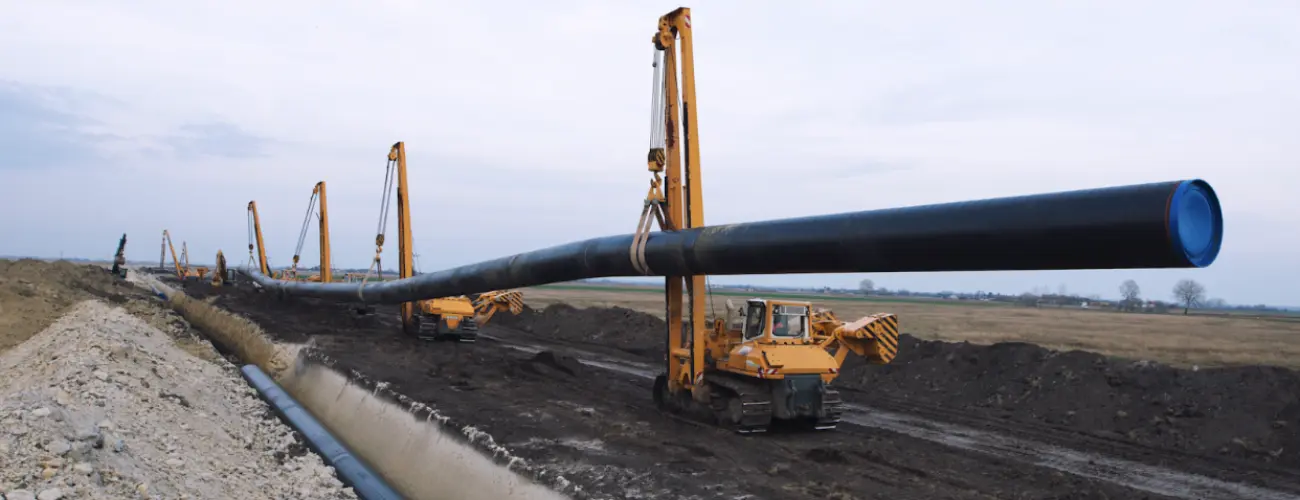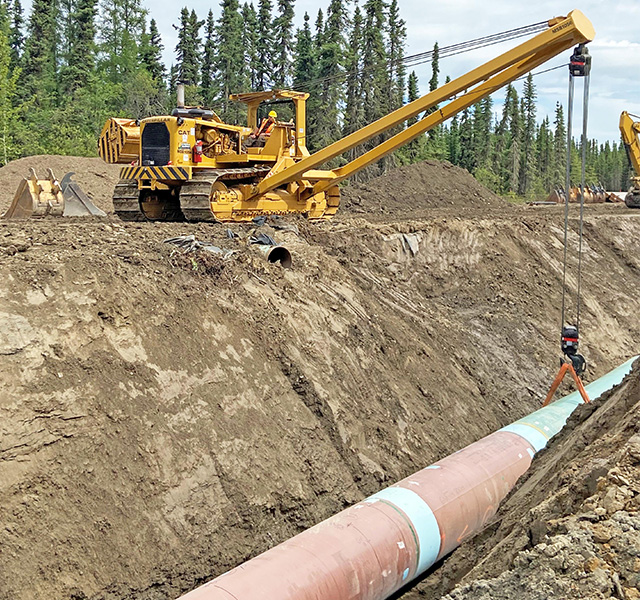Best Maintenance Practices for Pipes Installed by Creek Pipe Midland
Wiki Article
What You Must Know About Pipe Trenching Providers: An In-depth Summary of Available Options
Pipe trenching solutions are important for the installation and upkeep of below ground utilities. They entail different approaches tailored to certain needs and settings. Understanding these techniques is key for efficient task execution. Each alternative presents its own collection of benefits and challenges. As the need for reliable utility administration rises, knowing what to take into consideration when picking a trenching service ends up being essential. What aspects should one focus on to guarantee success?Comprehending Pipe Trenching: What It Is and Why It Issues
Although often ignored, pipeline trenching is an important procedure in various building and utility jobs. This strategy entails digging deep into slim trenches to facilitate the installation of pipelines for water, gas, sewer, and telecoms. The significance of pipeline trenching hinges on its duty in making certain that these essential systems are correctly integrated into infrastructure, enabling the safe and effective delivery of necessary services.Proper trenching is vital for keeping the honesty of pipes and reducing dangers connected with soil erosion and collapses. It additionally enables effective inspections and upkeep of below ground utilities. Additionally, understanding the neighborhood guidelines and environmental considerations is critical, as inappropriate trenching can cause costly hold-ups and legal issues. Inevitably, pipe trenching functions as the fundamental step that sustains different construction undertakings, making it a considerable aspect of contemporary infrastructure growth.
Common Trenching Approaches for Underground Energies
In the domain of below ground utilities, numerous trenching methods play an essential role in installment and maintenance - Creek Pipe pipeline construction. The open-cut trenching approach, directional boring method, and hydro excavation procedure each offer one-of-a-kind advantages depending upon the particular job requirements. Comprehending these approaches is vital for reliable and effective energy monitoringOpen-Cut Trenching Method
Open-cut trenching is a widely utilized method for setting up underground utilities, specifically when the deepness and width of the trench enable efficient accessibility. This method entails digging deep into a trench along the proposed course of the energy, supplying straight presence and ease of access for setup. It is especially helpful for jobs that require comprehensive excavation, as it promotes fast installment and inspection. Nevertheless, it likewise requires mindful preparation to reduce interruption to the surrounding location, including web traffic and existing structures. Open-cut trenching is most effective in open areas where the soil conditions are favorable, however it may be restricted in urban environments as a result of the presence of existing energies and various other below ground obstacles.Directional Boring Strategy

Hydro Excavation Refine
Just how does hydro excavation stand out among typical trenching methods for underground energies? Hydro excavation uses high-pressure water and vacuum cleaner modern technology to securely get rid of dirt, allowing for exact digging around delicate below ground energies. This approach decreases the risk of damaging existing framework contrasted to typical mechanical excavation. By employing water to loosen the dirt, hydro excavation gives a less invasive method, minimizing the possibility for soil compaction and making certain a cleaner worksite. In addition, the process improves exposure during excavation, improving total accuracy and performance. Hydro excavation is especially useful in metropolitan areas where utility lines are largely packed, making it a recommended option for specialists concentrated on security and precision in underground jobs.Advantages of Trenching Solutions
While various methods exist for installing below ground energies, trenching solutions provide unique advantages that make them a preferred selection for several jobs. One considerable benefit is the cost-effectiveness of trenching, as it usually requires much less customized devices compared to choices like hydro excavation. This usually causes lower labor and operational prices. Furthermore, trenching can accommodate a wide array of utility types, consisting of water, drain, and gas lines, offering versatility for contractors.Moreover, trenching permits effective access to numerous lines in a single excavation, decreasing interruption to the surrounding area. The procedure also makes it possible for accurate installation and repair service, which is vital for sticking to regulative criteria and making sure long-term dependability. Eventually, trenching can be carried out relatively promptly, lowering project timelines and permitting faster service repair. These advantages collectively make trenching solutions a practical choice for several underground energy tasks.Drawbacks and Obstacles of Trenching
Despite the various benefits of trenching solutions, there are noteworthy downsides and obstacles that must be thought about. One substantial challenge is the capacity for soil instability, which can bring about cave-ins, presenting dangers to employees and tools. Additionally, trenching can disrupt existing utility lines, requiring mindful preparation and control to avoid service interruptions. The process can likewise be lengthy, especially in city locations where room is minimal and accessibility is limited. Trenching may need comprehensive permits and regulatory conformity, including intricacy and prospective delays to projects. Ecological problems, such as dirt erosion and damage to neighborhood ecosystems, can arise from improper trenching methods. The costs connected with trenching, including labor and equipment, can escalate if unexpected concerns develop throughout the task, making it crucial for stakeholders to weigh these difficulties versus the advantages when taking into consideration trenching services.Key Factors to Consider When Picking a Trenching Service
Picking the ideal trenching service can substantially affect the success of a project. Numerous vital aspects ought to be analyzed to ensure an ideal selection. Initially, the company's experience and competence in trenching procedures are necessary; a reputable service with a solid record is generally more trustworthy. Next, examining the devices utilized is essential, as contemporary machinery can enhance performance and accuracy. Furthermore, it is considerable to think about the series of solutions supplied, including excavation depth and dirt type handling, to validate they satisfy particular task requirements.Another variable to review is the company's track record; client testimonials and endorsements can give understandings right into previous efficiency. Obtaining detailed quotes that outline costs and timelines will certainly assist in spending plan monitoring. Verifying compliance with neighborhood laws and market requirements is vital for avoiding potential lawful problems. By assessing these variables, clients can make an informed choice when picking a trenching service.Precaution in Pipe Trenching
In pipeline trenching, security measures are essential to making certain worker protection and website stability. Trick elements include making use of personal safety devices, extensive excavation website assessments, and well-defined emergency situation reaction methods. Carrying out these steps greatly minimizes risks related to trenching operations.Individual Protective Tools
Safety in pipeline trenching greatly relies upon the correct use of individual protective devices (PPE) Employees must put on construction hats to shield against dropping things, in addition to high-visibility vests to boost their visibility on-site. Steel-toed boots are crucial for foot protection against hefty tools and materials. Furthermore, handwear covers are essential for hand safety and security, particularly when managing harsh or sharp objects. Respirators may likewise be essential in environments with dust or unsafe fumes. Eye protection, such as security goggles, must be put on to shield against debris. Ultimately, listening to protection is essential in loud work environments. By adhering to PPE guidelines, workers can greatly reduce the threat of injury and ensure a much safer trenching operation.Excavation Website Evaluation
Effectively examining the excavation site is an essential step in ensuring a risk-free pipeline trenching procedure. This procedure includes examining the website for prospective dangers such as underground utilities, unstable soil conditions, and neighboring frameworks. An extensive evaluation enables for the identification of risks that could compromise employee safety and security. In addition, validating the dirt type and moisture levels can aid establish ideal shoring approaches to avoid trench collapses. It is crucial to assure that the site is clear of particles which appropriate signage is displayed to signal employees of continuous operations. Normal examinations throughout the job can likewise help identify any kind of modifications in site problems, allowing timely changes to precaution and job procedures.
Emergency Situation Feedback Protocols
Emergency feedback procedures are essential in mitigating dangers associated with pipeline trenching operations. These protocols ensure that all employees are prepared to act quickly and properly in emergencies. Crucial element consist of normal safety drills, clear interaction networks, and designated emergency situation leaves. Additionally, Creek Pipe trenching services first-aid sets and emergency situation get in touch with numbers must be readily available on-site. Trenching procedures must likewise consist of treatments for dealing with dangerous circumstances, such as collapses or utility strikes. Educating workers on acknowledging possible hazards and comprehending their duties throughout an emergency is vital. Maintaining an updated site safety and security strategy can substantially enhance response efficiency. In general, efficient emergency situation preparedness promotes a much safer working atmosphere and lessens the influence of unanticipated cases.Price Factors To Consider for Trenching Providers
Recognizing the monetary ramifications of trenching services is vital for job planning and budgeting. The costs related to trenching can vary widely based upon numerous aspects, consisting of job size, dirt kind, and deepness of the trench. Labor expenses frequently represent a significant section of the complete cost, as competent operators are necessary for reliable implementation. Furthermore, equipment service charges can contribute to the overall spending plan, particularly for specialized machinery.Site ease of access is an additional crucial element; difficult surface may necessitate added resources, increasing prices. Allowing and governing conformity can also include to costs, particularly in city areas where regulations are stringent.Lastly, unpredicted issues, such as experiencing existing energies, can result in unanticipated costs and hold-ups. Therefore, getting in-depth estimates from reputable trenching solution providers is crucial for accurate budgeting and making certain effective task conclusion.Regularly Asked Inquiries
The length of time Does a Common Pipe Trenching Job Take?
The duration of a typical pipeline trenching job differs significantly based on elements such as deepness, soil problems, and task intricacy. Normally, it can take anywhere from a couple of days to numerous weeks to complete.What Tools Is Frequently Utilized in Pipe Trenching?

Are There Environmental Laws for Trenching Activities?
Ecological regulations for trenching tasks often need conformity with local, state, and government guidelines. These guidelines intend to decrease environmental disruption, shield water resources, and assurance correct waste monitoring throughout excavation and installment processes.
Can Trenching Solutions Be Combined With Other Construction Tasks?
Trenching solutions can certainly be incorporated with various construction tasks. By working with initiatives, performances can be attained, minimizing disturbances while guaranteeing that all necessary facilities work is completed in a timely and cost-efficient manner.
What Prevail Dirt Enters Experienced in Trenching?
Common soil kinds run into in trenching include clay, sand, silt, and loam. Each type presents one-of-a-kind difficulties, influencing excavation methods and security, necessitating cautious preparation to ensure safe and efficient trenching procedures.Report this wiki page